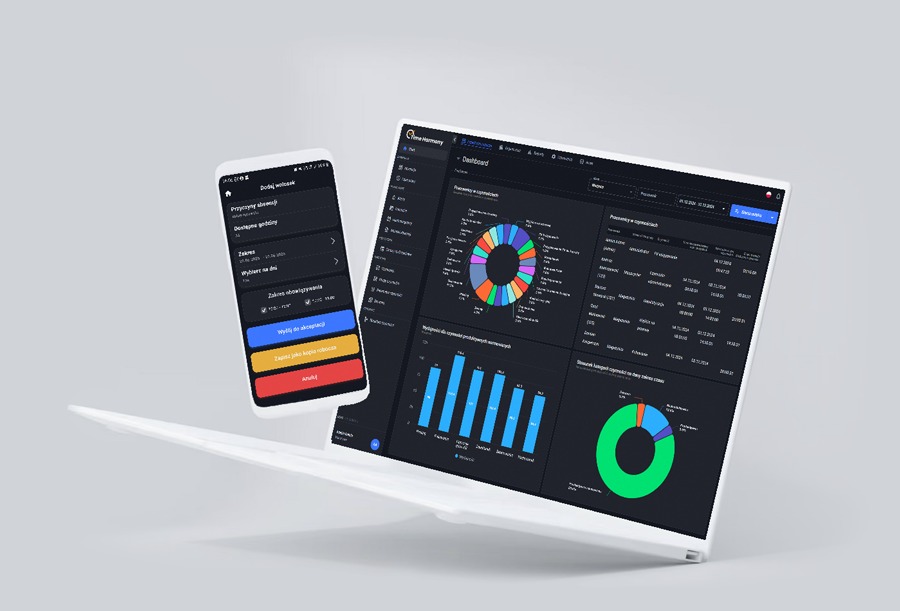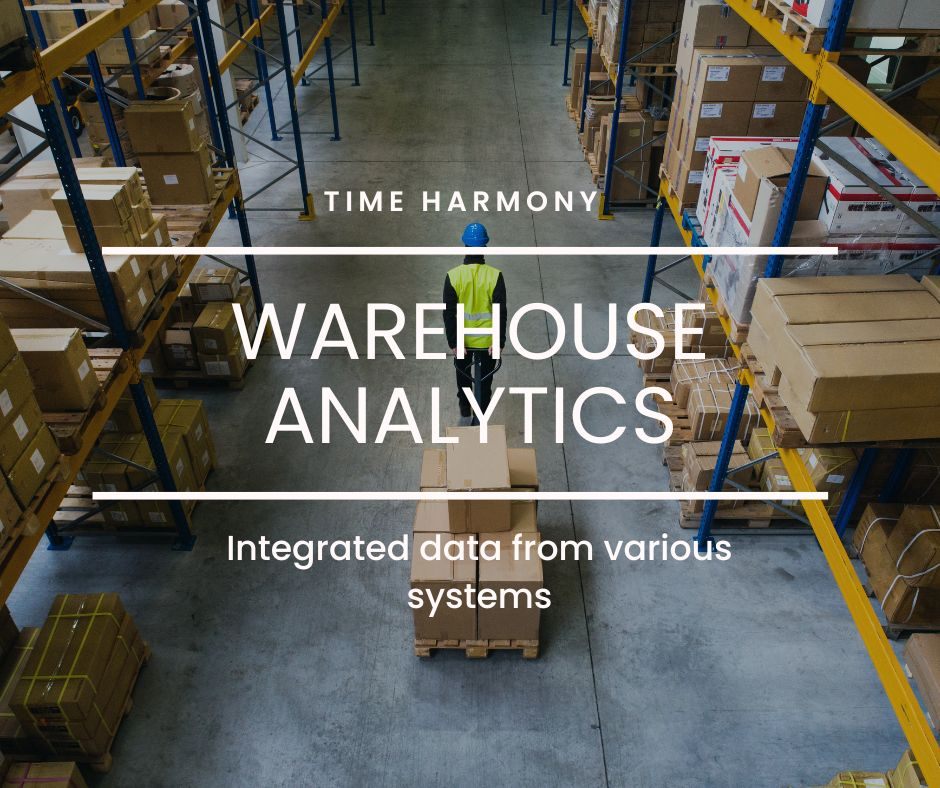The benefits of integrated warehouse analytics in the area of working time and employee productivity are enormous. It's not just about reducing labor costs, it's about gaining a comprehensive understanding of how processes and all warehouse operations are going on.
Data-driven operations and optimisation
In our daily experience in working with clients, we have witnessed huge transformations resulting from access to analytical data provided by our system. These are multidimensional benefits, from reducing labor costs to streamlining processes and developing employee skills.
An important step in our cooperation with warehouse teams is to collect data from various internal systems and integrate it with data on non-system activities recorded on Time Harmony devices.
Full data on the team's workflow, taking into account activities taking place outside the warehouse system, gives a comprehensive insight into the course of processes and employee performance, expressed in basic performance indicators (KPIs):
Employee productivity. Maximizing performance indicators is essential. With analytics, operations managers gain insight into their teams' performance and identify areas for improvement.
Number of units per hour. Understanding which customer and product line are the most profitable is crucial for the profitability of the whole business. Production control and analytics-driven planning help managers to make informed decisions about resource allocation.
Employee engagement and skills. Motivated and qualified staff is a valuable resource. Developed warehouse analytics can provide data on the level of employee engagement. It is also a valuable source of information about areas that require development, providing the knowledge necessary to determine training needs and employee retention policies.
Integrated warehouse analytics available for every level of management
On-line data provided by Time Harmony allows for quick assessment of work progress, making transfers between teams, ongoing analysis of the amount of resources necessary to complete the order based on performance information.
In-depth process analysis
Easily accessible, comprehensible data enables to make improvements to processes at every level of management.
With such a strong analytical tool, managers can use data to find answers to questions in the area of operational optimization, such as:
Correctness of planning. How accurate is our current planning model and can it be improved?
Operational efficiency. Which operational areas are the most and least productive, and what can be done to improve them?
System problems. Are there systemic problems in our organization that require in-depth analysis?
Elimination of unnecessary parts of processes. How will eliminating certain parts of the process that have no value for the service or the final product affect the overall process?
It is worth mentioning that Time Harmony can operate independently of the Client's internal systems, providing knowledge about the activities performed and the performance of employees. However, integration with internal systems (WMS, ERP, turnstiles, scanners, T&A module) is the most optimal scenario, which will provide complete data on working time as well as indicate idle times and activities, which are an area for quick, measurable optimization moves.

Optimize working time and efficiency of your team

